The Rise and Fall of Bronzeville
At its peak in the 1930s to 1950s, it had quite a history.
The old Bronzeville area, that comprised all or parts of today’s Halyard Park, Triangle, Triangle North, Hillside, King Park, and Haymarket neighborhoods, was once a thriving community of fluctuating, collaborating ethnic groups. It was a place where new immigrants and migrants were able to test and hone their talents. The early residents were mostly Germans who established the early commercial corridors on North 3rd, North Avenue, and Walnut Street. By 1900 some of the Germans in the area were moving to other locations north and west, and new populations were arriving. These included Eastern European Jews, Slovaks, Poles, Czechs, Hungarians, and African Americans.
Businesses: A snapshot of Walnut Street in 1930
Walnut Street in 1930 was a polyglot of ethnic merchants. Between 3rd and 8th Streets, African American proprietors dominated. Included among them were Radio Chicken Shack, Miss Lulu’s Dry Goods, Willie Jones Billiards, Fred Bobo Dentist, De Reef & Dorsey Lawyers, and Malcolm King Physician. Between 9th and 11th Streets, Jewish proprietors dominated, including Aaron Glusman Meats, F. Perchonok & Sons Coal, Andrew Goldwyn Drugs, Samuel Horowitz Soft Drinks, Philip Raskin Plumber, and Morris Parchefsky Shoes. Most of the proprietors west of 11th Street were other European Americans—mostly Germans and Slavs.
Proprietor family profile: The Malcolm M. King family
Malcolm M. King was a black physician with an office at 625 W. Walnut. Born in the West Indies, King opened his Milwaukee office in the late 1920s and remained until sometime in the 1940s. About the time he set up his Walnut Street practice he married Edwina Smith and brought her teenage daughter Isabel into the union (see photo of Isabel right). Isabel took the surname of King. The family rented a home on nearby Clark Street, as apparently even physicians had difficulty purchasing homes in Milwaukee if they were black.
The match between Edwina and Malcolm may have been stimulated by common experiences, as Edwina was also college-educated and the daughter of a doctor. Her father, Frank G. Smith was a general practitioner and her mother Lena Smith (nee Calhoun) was also college-educated.
Edwina’s family was shadowing the movement of the Great Migration. Her parents had roots in Alabama and Georgia and moved north into Tennessee by the time that Edwina was born. Frank may have been a student at Meharry Medical College in Nashville, the first medical school in the South for African Americans. The family then took up residence in Chicago where they purchased a home on Wabash Avenue. Other family members moved on to Milwaukee.
Malcolm and Edwina’s daughter Isabel followed the same family pattern, even as the Great Depression loomed on. While Malcolm was practicing medicine on Walnut Street, she received an education at Milwaukee State Teachers College, where she graduated with a degree in exceptional education (the photo is her graduation picture).
It is not known how long the King family remained in Milwaukee. It is unlikely that Malcolm King would have lived into the 1960s where he could have extolled the significance of his Christian and surname in the Civil Rights Movement.
Bronzeville business growth
Between 1930 and 1950, the African American population in Bronzeville nearly doubled. While dozens of Jewish-, German-, and Slavic-owned stores remained on Walnut Street, African American business and offices now dominated the street between 3rd and 11th. Included among them were Louisiana Fine Foods Restaurant, Our Chicken Shack, Howard W. Moore Phonograph Records, O’Bee Funeral Home, Seven Hundred Tap, Theodore Coggs Lawyer, John W. Maxwell Physician, Anthony J. Josey Real Estate, and Wisconsin Enterprise Blade Weekly Newspaper. Scores of black-run businesses, offices, and clubs also lined the side streets and extended to North Avenue.
Proprietor family profile: Alice (“Alyce”) Beatrice Archie & family
Sometime in the late 1930s, a self-determining African American woman opened a clothing store at 904 West North Avenue. Alyce Archie’s Women’s Clothes remained in operation well into the 1940s and probably beyond. At this time, stores on North Avenue were almost completely run by European Americans, and the overwhelming majority of these were men.
Alyce lived around the corner, on North 10th Street with her husband James and daughter Mary in a rented house–in the heart of Bronzeville. Her husband worked in an auto body shop.
Alyce was also a product of the Great Migration. She was born in Calhoun County, Alabama in 1917 to parents Doc Swain, a pipe fitter, and Mary Swain, a maid. She married James Archie in Alabama and the young family moved north, probably in pursuit of better economic and social opportunities.
Mary Archie, Alyse’s daughter (see school photo to right) would prove to be just as self-determining. In the early 1950s she attended and graduated from North Division High School, and became one of just a handful of African American students there at the time. She served in several leadership roles, including on the student council.
Alyce and James would divorce and by 1965, Alyce was remarried to a man with the surname of Stoney. She lived to be 85. No information was found on Mary Archie after she left North Division High School.
The people of Bronzeville
In so many ways, the people that tested and honed their talents in the Bronzeville area went on to become trailblazers and icons in various arenas in Milwaukee, the United States, and even on the world stage. Only a handful of these individuals are highlighted below.
Golda Mabowehz Meir
Born in Russia to parents Morris and Bella Mabowehz, Golda’s family first settled on 6th and Walnut Street on the border of today’s Hay Market and Hillside neighborhoods in the years following the turn of the 20th century. There the family lived in the building where they ran a grocery store. In her later memoirs Golda wrote about the excitement of being in Milwaukee with the great department stores like Schuster’s and the endless procession of cars, trolleys and shiny bicycles on the street. In the neighborhood, Golda attended Fourth Street Grade School (today’s Golda Meir School). She actually began her activism at the school when she organized a fundraiser to pay for her classmates’ textbooks.
Golda’s family soon moved deeper into today’s Hillside neighborhood–at 2136 N. 10th Street, where Golda began attending North Division High School. During this time she met and became romantically involved with Morris Myerson (name later changed to Meir), who worked as a painter and a writer. Both became very interested in Zionism. With her parents urging her to avoid marrying too early, Golda went on to college and graduated from Milwaukee Normal School—today the University of Wisconsin-Milwaukee. Following graduation, she took a job at the Milwaukee Public Library for 20 cents an hour.
She and Morris married. They rented their first unit in the Hillside neighborhood and in 1919 moved to 13th and Juneau (then Chestnut Street) in today’s West Town neighborhood. In spring of 1921, Golda and Morris left Milwaukee for Palestine, determined to play a salient role in the struggle for a Jewish homeland.
The rest of Golda’s story is history. She became chief negotiator between the Jews of Palestine and the British Mandatory Authority. When Israel was officially established in 1948, she served as Minister of Labour and Foreign Minister, and was elected Prime Minister of Israel in 1969. To this day, she is regarded as one of the most remarkable world leaders.
Hattie McDaniel
In 1929, Hattie Holbert McDaniel moved to a rented flat on North 7th Street in today’s Hillside neighborhood—then Bronzeville. She was born in 1895 in Kansas, the youngest of 13 children of former slaves, Henry McDaniel and Susan Holbert. Her father Henry had fought in the Union Army for the 122nd Colored Troupes during the Civil War. One of Hattie’s brothers, Sam McDaniel, developed a career in Hollywood, playing the role of a butler in a Three Stooges’ short film, among others. Also interested in the entertainment field, Hattie wrote songs and joined a black touring ensemble in the early 1920s in Denver and Chicago. She briefly became a recording artist for Oheh and Paramount Records.
However, the advent of the Great Depression changed the course of Hattie’s career. In 1929, the only job she could find was that of a restroom attendant for the Madrid Club on 126th and Bluemound, just outside of Milwaukee. The Madrid Club had a reputation for excellent music and food, but was chiefly known as a speakeasy with access to gambling. Having rented a flat in old Bronzeville, Hattie added to her income by taking in a roomer named Robert Ray, who worked as a street laborer. This liminal time in the neighborhood no doubt spurred Hattie to reflect on future aspirations.
By 1931, Hattie joined her brother Sam and sisters in Los Angeles. She managed to get small roles in several films, including one with Mae West (another former Milwaukee connection). Her pay was so low that she continued working as a maid.
Hattie’s major break came when she auditioned for and won the role of slave Mammie in Gone with the Wind. The movie, released in 1939, became an instant blockbuster and received many Oscars. Hattie McDaniel won in the Best Supporting Actress category, becoming the first African American to win an Oscar.
The Halyards
When the Halyards first moved to Milwaukee, they settled on North 9th Street just outside of the Halyard Park neighborhood, which today bears their surname. By 1940, Wilbur and Ardie Halyard had moved to the Old North Milwaukee area. Like many former residents of Bronzeville, the Halyards were trailblazers. Together the couple founded the first African American-owned savings and loan association in the State of Wisconsin. They opened Columbia Savings & Loan with just a $10 bill in 1924, just one year after they arrived in Milwaukee. The institution helped black families secure home loans—a radical change from the policies of mainstream banks that usually denied loans on the basis of race.
Both Wilber and Ardie came from humble beginnings. Born in South Carolina in 1895, Wilber completed high school and moved north with the Great Migration, taking a caretaker’s job in Beloit in 1920. Ardie (nee Clark) was born 1896 in Covington Georgia, the daughter of sharecroppers. She had graduated from Atlanta University, moved north, and married Wilber in Wisconsin.
While the two were running Columbia Savings & Loan, Ardie worked as a social worker for Goodwill Industries during the days and donated her time at the S&L at night. In 1951, Ardie became the first woman president of the Milwaukee chapter of the NAACP. In the 1960s, she worked with Father James Groppi to establish the NAACP Youth Council, a group responsible for most of the fair housing marches in 1967. Ardi Halyard also served on the Wisconsin State Board of Vocational, Technical, and Adult Education for more than eight years.
Al Jarreau
In 1940, the Jarreau family moved to 336 W. Reservoir in the Halyard Park/Bronzeville neighborhood. The father, Emile Jarreau, was the descendant of Creoles from Louisiana, and the mother, Pearl Walker Jarreau, was born in Florida. Emile and Pearl raised six children on Reservoir. Both Emile and Pearl were spiritual organizers in the Negro Seventh-day Adventist movement. According to the 1940 census, both had completed two years of college, possibly at the Andrews University Seminary in Michigan. Emile was an ordained pastor and church singer and Pearl an accomplished church pianist. Emile also supplemented his income as a welder.
In 1940, the Seventh-day Adventists had 206 African American churches and 14,537 black members. Music had always been very important among black Adventists. Early on there was the commitment to bring in African musical patterns and genres that had been brought over by slaves, such as embracing the juxtaposition of one rhythm upon another and modal scales in which the melodies were often interwoven.
The Jarreau children of Bronzeville were brought up with these musical traditions, singing together at church concerts. The fifth child, Alwin Lopez Jarreau (“Al”), was particularly talented, developing unique musical expressions at an early age. After graduating from Lincoln High School, he attended Ripon College where he sang with a group called the Indigos. He graduated from Ripon and went on to receive a master’s degree in rehabilitation therapy from the University of Iowa. Working as a rehabilitation counselor in California, he often moonlighted as a jazz singer in nightclubs. He was eventually spotted by Warner Brothers and was offered a recording contract.
His unique vocal sound ultimately earned Al Jarreau seven Grammy awards and over a dozen nominations. Perhaps his most popular album was the 1981 Breakin’ Away. In 2005, Jarreau returned to Milwaukee to give the keynote speech at the UW-Milwaukee graduation ceremony. Jarreau died in 2017 at age 77.
![Bob Uecker. Photo by Steve Paluch (Own work) [CC BY-SA 3.0 (http://creativecommons.org/licenses/by-sa/3.0)], via Wikimedia Commons.](https://urbanmilwaukee.com/wp-content/uploads/2017/08/Bob_Uecker-537x590.jpg)
Bob Uecker. Photo by Steve Paluch (Own work) [CC BY-SA 3.0 (http://creativecommons.org/licenses/by-sa/3.0)], via Wikimedia Commons.
In 1940, the Uecker family lived on the corner of 3rd Street (now MLK Boulevard) and Garfield, on the boundary between today’s Halyard Park and Brewers Hill neighborhoods. The father August (“Gus”) was a German-speaking immigrant from Switzerland and the mother Mary (“Sue”) had been born in Michigan, apparently the daughter of Swiss immigrants. August was working as a truck driver for a construction company. Having learned the tool and die trade at an early age, he often helped support his family during the Great Depression earning $2 to $3 a day working on cars.
August and Mary had three children—Robert, Caroline, and Rosemary. By 1940, 6-year-old Robert (“Bob”) had become an avid baseball fan, frequently riding his bike to watch the minor league Milwaukee Brewers play at nearby Borchert Field. One of his favorite players was Johnny Logan. Bob also played baseball in high school.
At age 20, Uecker enlisted in the army and played military baseball. While in service, the Boston Braves had moved to his home town and become the Milwaukee Braves. In 1956, Bob Uecker signed a major league contract with the Braves as a catcher for $3,000. He spent his career as a lackluster back-up catcher with a .200 career batting average and a league-leading number of passed balls in 1967.
Uecker went on to use his uninspiring baseball career as material for stand-up comedy. After making repeated appearances on the Tonight Show, Johnny Carson dubbed him “Mr. Baseball.” Soon Uecker became a household word. He made dozens of TV commercials and even appeared in comedy roles in the film Major League and as a supporting actor in the TV series Mr. Belevedere. He also helped call major league games for ABC and NBC.
When the Milwaukee Braves moved to Atlanta following the 1965 season, a local businessman, Bud Selig, campaigned to bring another major league team to Milwaukee. The effort came to fruition in 1970 when the bankrupt Seattle Pilots team was purchased and moved to Milwaukee to become the Milwaukee Brewers. Selig was intent on bringing Uecker in to join a team of Brewer broadcasters. Since 1971, Bob Uecker has been “the voice of the Brewers.”
Bob Uecker has authored two books: Catcher in the Wry and Catch 222.
The loss of Bronzeville
During the 1950s and 1960s, two government programs displaced most of this community. One program was the Urban Renewal Administration, which had been designed to improve central city housing. Many blocks in Bronzeville were slated for revitalization, and residents on these blocks were forced to sell their homes or were offered alternative housing in other areas of the city. During the same time period, the Milwaukee County Expressway Commission was building two major freeway corridors in the heart of the City. One cut directly across Bronzeville, discarding Walnut Street as the center of the community. Over 8,000 homes were lost as were nearly all of the scores of businesses, clubs, and organizations on or near Walnut Street.
New Bronzeville
Beginning in the 1990s, there have been community-wide efforts to redevelop an area near and north of old Bronzeville into the Bronzeville Cultural and Entertainment District. In recent years these efforts have been led in part by Alderwoman Milele Coggs and Maures Development Group. The new district, in today’s Halyard Park and Harambee neighborhoods, has attracted a number of art and commercial enterprises. The latest is the Garfield project, a $17.4 million catalytic development designed to transform a nearly vacant city block into a mixed-use campus. Included among the features will be 30 apartment units, and 8,000 of square feet of commercial space called the Griot (with 41 more residential units). The Griot and Historic Garfield project has been spearheaded by Maures Development Group in collaboration with J. Jeffers & Co. Included among the project’s features is the reopening of America’s Black Holocaust Museum.
Renderings of The Griot:
The Return of the ABHM
America’s Black Holocaust Museum was founded in 1984 in a Milwaukee storefront by Dr. James Cameron, the only known survivor of a lynching. In 1988 Cameron acquired a spacious free-standing building, where he expanded ABHM’s exhibits and employed staff. Cameron’s passing in 2006 combined with the country’s economic downturn forced the museum to give up its building in 2008. The museum went online, providing myriads of links to useful information on African American history and contributions. But today, thanks to the efforts of full time volunteers such as Reggie Jackson, Brad Pruitt, and Dr. Fran Kaplan, the efforts of Maures Development, a tax credit equity, foundation support, and an ongoing capital campaign, the museum is on track to reopen in the spring of 2018. Interested donors can go to the museum’s contribute page here.
Yesterday's Milwaukee
-
When Boston Store Was Big
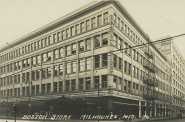 Apr 18th, 2018 by Jeff Beutner
Apr 18th, 2018 by Jeff Beutner
-
Sherman Park Has Been a Melting Pot
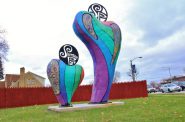 Aug 25th, 2017 by Jill Florence Lackey, PhD
Aug 25th, 2017 by Jill Florence Lackey, PhD
-
The World’s Largest Shipper of Wheat
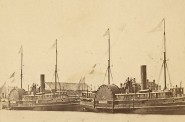 Oct 19th, 2016 by Jeff Beutner
Oct 19th, 2016 by Jeff Beutner

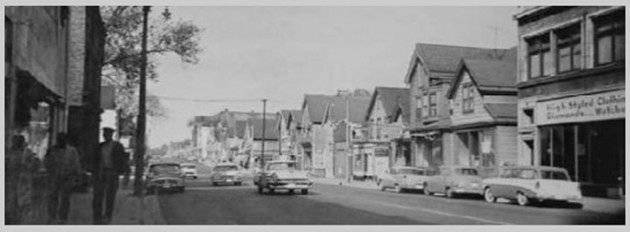
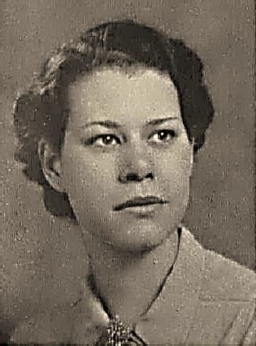
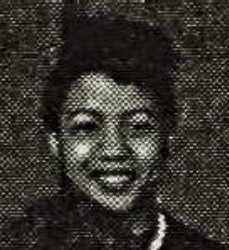
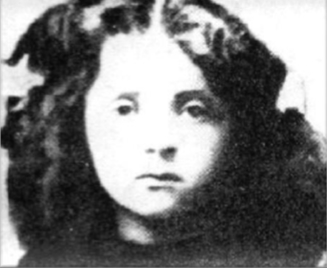
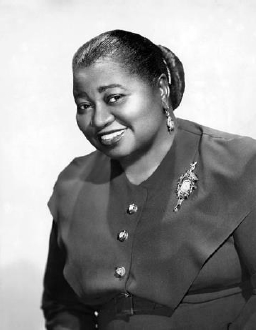
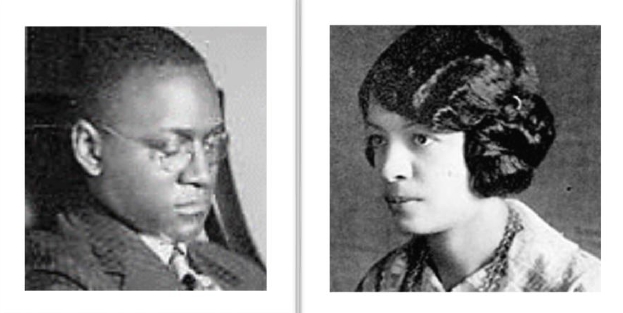
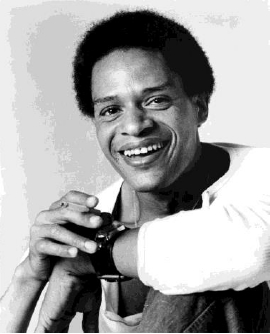


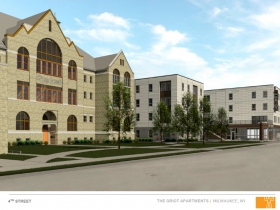
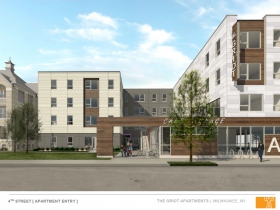
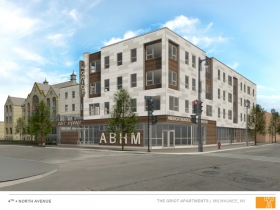




















This is a great piece. Significant at many levels.
Ardie Halyard was my great aunt. Dr. Maxwell was my cousin. State Assemblyman LeRoy J. Simmons, was my grandfather. Ronald & Constance Baldwin, the 1st. black owned florist shop in Milwaukee, are my parents. My great,great grandfather, Walter Reaves trained horses for schlitz beer
Great piece on Bronze I’ll. I included some musical history of the area in my 2014 book, “Milwaukee Rock and Roll.” Because of the ongoing prejudice against African Americans in the years following World War II, Bronzeville nightclubs and dance halls were the only place that Duke Ellington, Muddy Waters, Little Richard, and other famous entertainers could play. Ellington often stayed with a family or at a bed and breakfast type rooming house in the neighborhood when he came to Milwaukee.
Isaac “Ike” Coggs promoted black musical acts during this time, and brought Billie Holiday to Milwaukee to perform at the old roller skating rink on the river in what is now the Riverwest neighborhood.
By the end of the 1950s, black musicians became too big for the mainstream venues to ignore, and Chuck Berry headlined a rock show at the Riverside theatre downtown.
GREAT DOCUMENT TERRIFIC POINT OF REFERENCE OF MILWAUKEE’S TRUE HISTORY
Article, Awesome! William Lawrence, ProCon Business